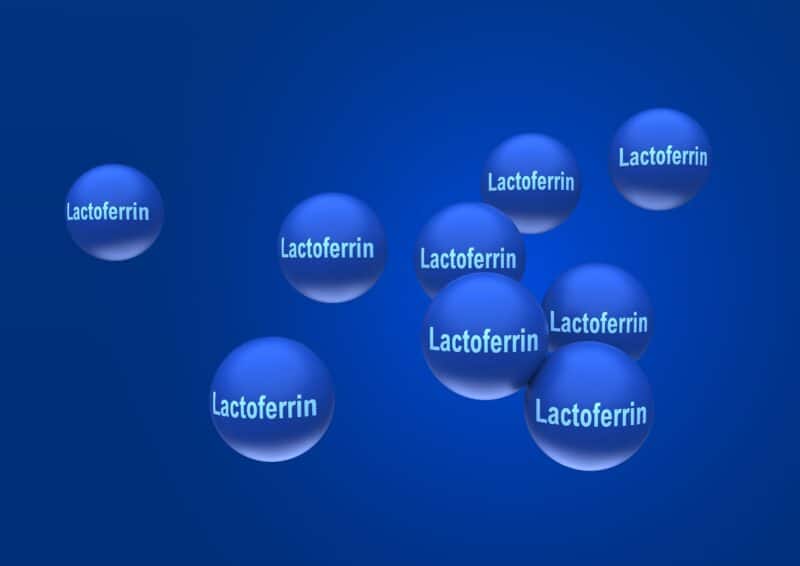Whey Protein Benefits: Bioactive Peptides & Immunoglobulins
Whey Protein Benefits
Whey Protein Benefits – Bioactive Peptides & Immunoglobulins
Whey’s Best Kept Secrets
You may be familiar with whey protein, as it is one of the most popular and biggest selling supplements on the market today. This is with good reason, as numerous scientific studies have demonstrated the host of great benefits it provides for both health and performance, such as helping to increase muscle mass and reduce body fat. Less familiar to most people are the many benefits provided by the bioactive peptides and immunoglobulins which are found in rich supply in whey, specifically in undenatured whey.
Whey Protein Benefits – What are the Benefits of Bioactive Peptides?
Bioactive peptides (BP) are organic substances formed by amino acids joined by peptide bonds. They play a significant role in human health by affecting the digestive, endocrine, cardiovascular, immune, and nervous systems. They have immunomodulatory, antibacterial, anti-hypertensive, antioxidative and opioid-like properties, and help to decrease cholesterol levels.
Bioactive peptides are derived from a number of proteins found in whey. These include:
What are the Benefits of Beta-Lactoglobulin?
Beta-lactoglobulin (beta-Lg) is the major whey protein of ruminant species, such as cows, and is an important source of biologically active peptides. It plays a particularly important role in modulating the human immune response and increases human immune cell proliferation. However, a study by Tai et al., (18) showed that beta-Lg’s ability to promote cell proliferation was lost when the protein is denatured. The authors concluded undenatured beta-LG is the major component in milk that modulates immune cell proliferation.
A review by Hernández-Ledesma et al., (19) also highlighted the importance of Beta-lactoglobulin (beta-Lg) as an important source of biologically active peptides, which play important roles in the human health, including antihypertensive, antioxidant and antimicrobial activities.
What are the Benefits of A-Lactalbumin?
A-Lactalbumin (α-La) is the second major protein of whey, and is a very good source of health promoting peptides. It accounts for about 20% of the total whey proteins. It has a naturally high content of all essential amino acids (EAA) and branch chain amino acids (BCAA). The most significant amino acids in alpha-lactalbumin are tryptophan, a precursor of serotonin, (also known as a ‘good mood hormone’) and cysteine, together with the BCAAs (leucine, isoleucine and valine), which drive muscle protein synthesis. α-LA, also has prebiotic and antibacterial actions, which help to ensure a healthy balance of gut bacteria.
A review by Layman et al., (20) highlighted α-lactalbumin as an important source of bioactive peptides and essential amino acids, including tryptophan, lysine, branch chain amino acids, and sulfur-containing amino acids. It also highlighted α-lactalbumin’s ability to support neurological function and sleep in adults, owing to its unique tryptophan content. The authors noted that other components of α-lactalbumin that may be beneficial in nutritional supplements include the branch chain amino acid leucine, which promotes protein synthesis in skeletal muscle, and bioactive peptides, which possess prebiotic and antibacterial properties.
Obesity-induced fat tissue inflammation has been shown to be a key cause of insulin resistance. Gao et al., (21) investigated the effects of peptides derived from α-lactalbumin (α-LAH) on adipose insulin resistance and inflammation induced by high-fat diet (HFD) in mice. The results of the study showed that α-LAH significantly reduced body weight, blood glucose, and serum insulin. In addition to its health benefits, α-lactalbumin has also been shown to aid athletic performance.
A study by Qin et al., (22) investigated the effect of pre-exercise ingestion of α-lactalbumin on subsequent endurance exercise performance, muscle pain and mood states. The results showed that α-lactalbumin elevated pressure pain threshold (PPT) and reduced the feeling of fatigue and cortisol levels.
Oikawa and colleagues (23) investigated whether supplementation with α-lactalbumin (LA), with high leucine and tryptophan content, would improve responses to short periods of intensified aerobic training compared with supplementation with collagen peptides (CP). The results showed that protein synthesis was enhanced to a greater extent when trained participants consumed α-lactalbumin compared with CP during intensified aerobic training, suggesting that protein quality is an important consideration for endurance-trained athletes aiming to augment adaption to exercise training.
What are the Benefits of Bovine Serum Albumin (BSA)?
Bovine serum albumin is a large protein found in milk. It comprises about 2-5% of whey protein. It has a high concentration of sulphur amino acids and glutamylcycsteine, both of which are precursors for glutathione the bodies master antioxidant. BSA promotes cell growth, health and longevity. It carries nutrients to cells and binds free radicals and toxins to reduce cell damage. It also binds hormones and growth factors in order to act as a buffer and keep them stable.
A study by McManus et al., (24) found that when bovine serum albumin was used as the dominant form of dietary protein it reduced fat mass and increased lean muscle in mice in comparison to a high fat diet.

What are the Benefits of Lactoferrin?
Lactoferrin is a bioactive peptide found naturally in milk. Its main functions in the body include binding with iron and transporting it, and fighting infection. It has been found to provide antioxidant, anti-inflammatory antibacterial, antifungal, antiviral, antiparasite and antitumor effects, and has a protective effect on the lining of the gut.
A study by Berluttie et al., (25) highlighted lactoferrin’s important role in immune regulation and defence mechanisms against bacteria, fungi and viruses. Lactoferrin’s iron withholding ability is related to inhibition of microbial growth. It also interacts with microbial, viral and cell surfaces thus inhibiting microbial and viral adhesion and entry into host cells.
Lactoferrin, along with lactalbumin, has been shown to improve weight loss and glycaemic control. A study by Zapata and colleagues (26) showed dietary lactalbumin and lactoferrin improved energy balance and metabolism, including glucose clearance, and decreased adiposity.
However, like other milk proteins, in order to gain the maximum benefit provided by lactoferrin the whey protein must be undenatured. Nguyen and colleagues (27) found that that low-heat-treated whey protein had elevated levels of lactoferrin compared with that of standard whey protein.
It also contained higher levels of transforming growth factor-β2. This a form of cytokine, a type of small protein important in cell signalling. It helps to regulate cellular immune responses cell growth and differentiation, the controlled death of cells, cell movement, the production of new blood vessels and extracellular matrix production (material secreted by cells that fills spaces between the cells in a tissue, protecting them and helping to hold them together).
Whey Protein Benefits – What are the Benefits of Immunoglobulins?
Immunoglobulins are a class of proteins which occur naturally in whey, and function as antibodies, helping to fight infection. Whey protein contains about 10-15% immunoglobulins. These bind to bacteria, toxins and other harmful molecules and remove them safely from the body.
There are a number of different immunoglobulins found in whey, which play specific roles in immunity:
- IgM can be thought of as being the first line of immune system defence. These large antibodies respond quickly and have low specificity so they can attack many types of potentially dangerous organisms, particularly bacteria and viruses. IgM antibodies are released when an organism is exposed to infection for the first time and help to initiate the attack of microbes by other immune cells.
- IgG is the primary immunoglobulin class present in cows’ milk and whey. This is also the most common type of human antibody and makes up about 75-80% of the antibody population. Once in the intestine, IgG inactivates harmful organisms by binding to them, thereby, reducing the microbes’ ability to cause illness.
- IgA inhibits bacterial and viral adhesion to epithelial cells, which line the surfaces of organs in the body and function as a protective barrier, and neutralise bacterial toxins and virus. It is also an immunosuppressant that helps to inhibit proinflammatory responses in the intestines
Whey Protein Benefits: In conclusion….
In order to optimise our physical performance, we need to optimise our health. As we have seen in this article, whey protein can make a valuable contribution to both through the wide range of benefits it provides. However, it is important to remember that in order to maximise the benefits provided by the bioactive peptides and immunoglobulins, the whey protein must be in its undenatured form.
Click the SHOP NOW button to check out our Advanced Time Release Undenatured Whey Protein Product to get all the benefits of using an undenatured whey protein.

